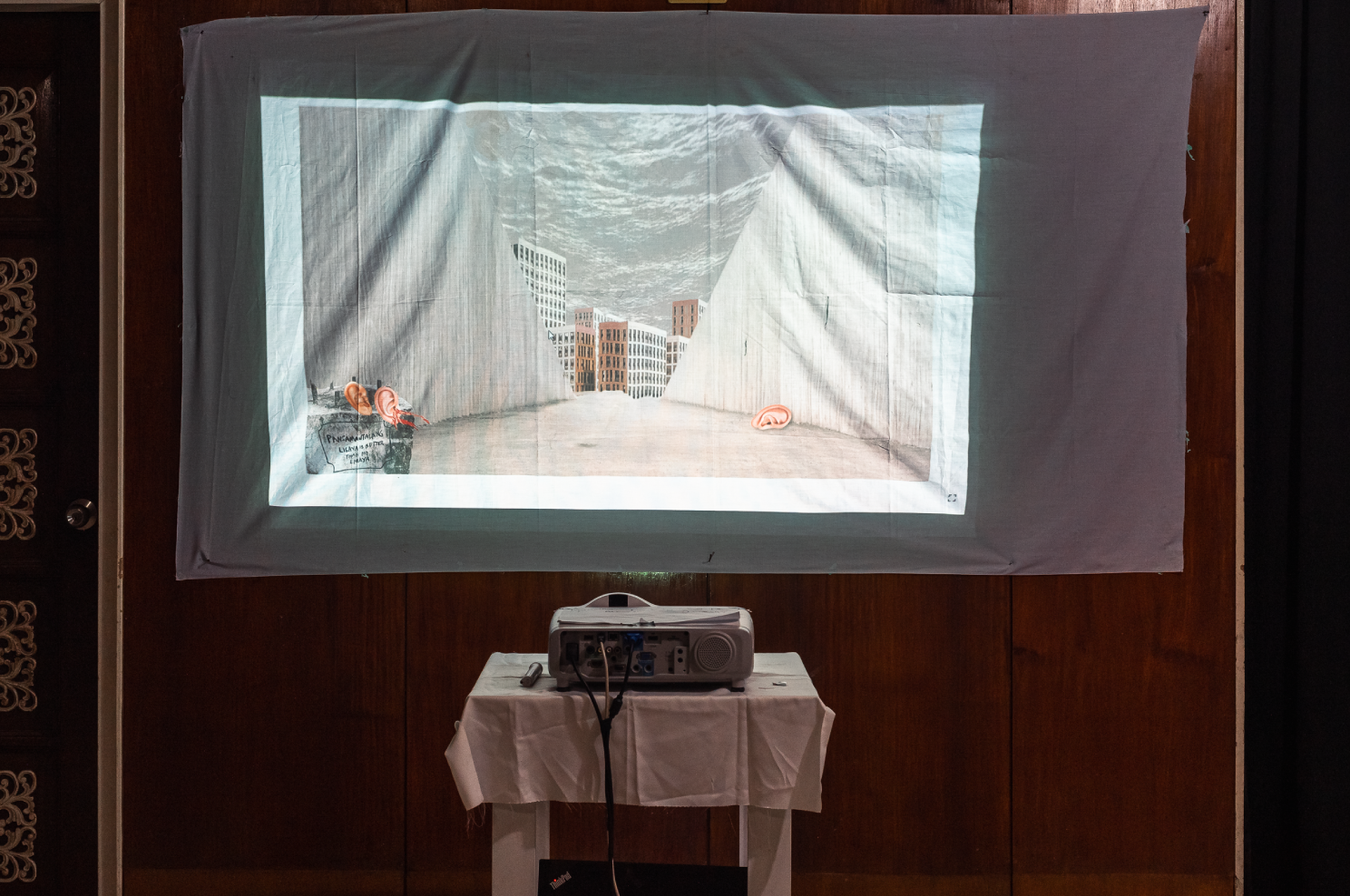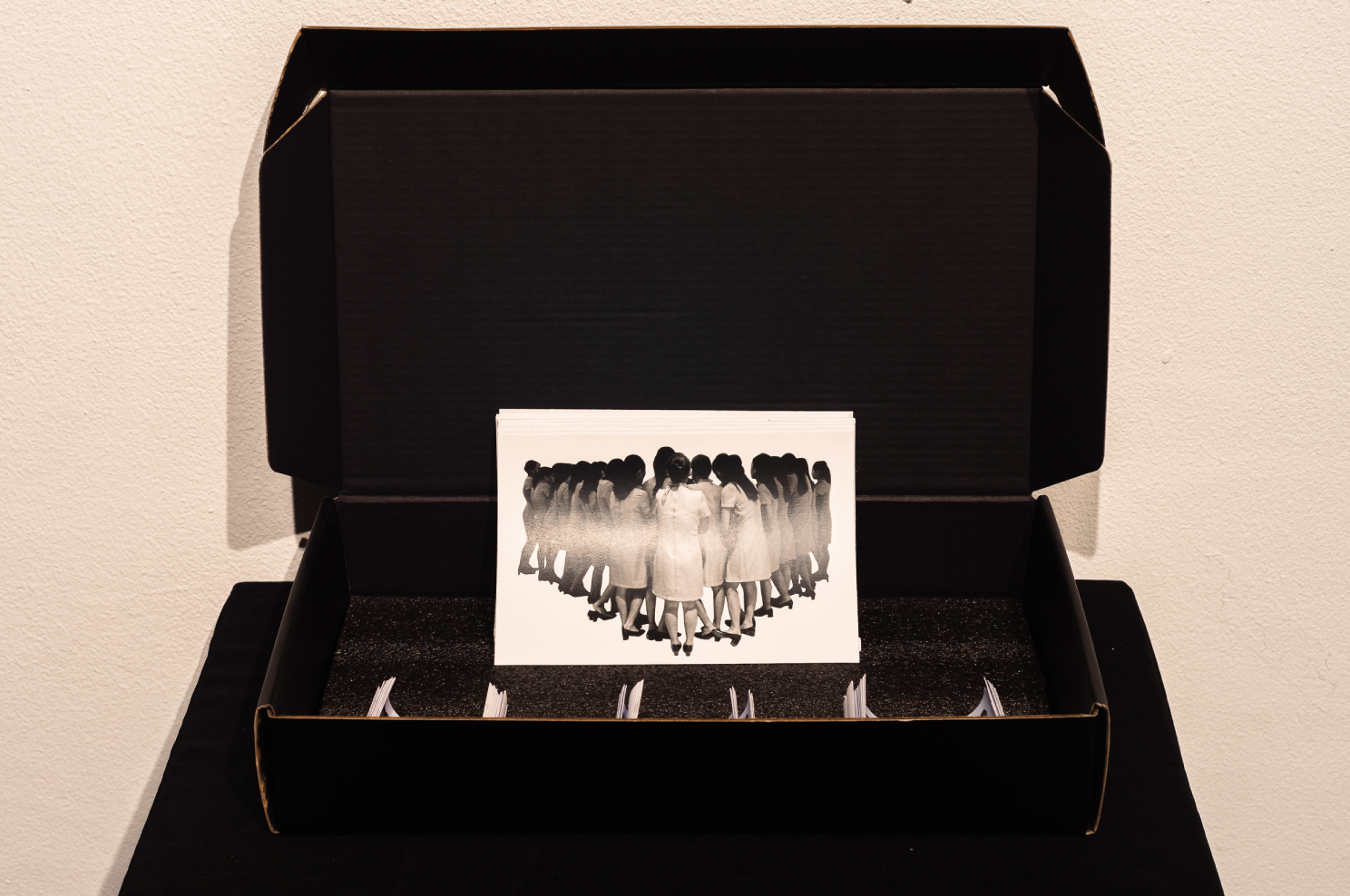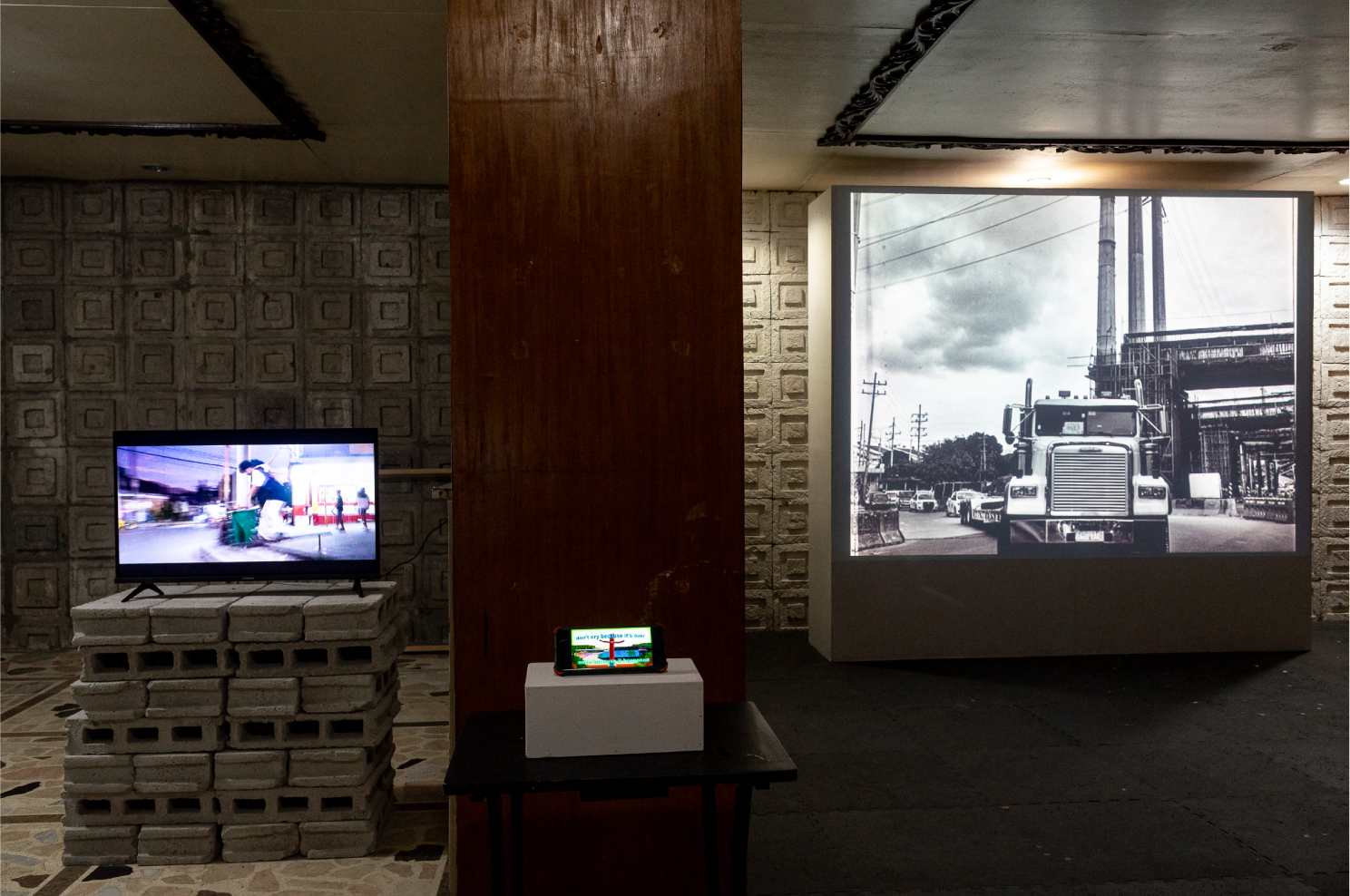Grappling with the Capital
Kabisera negotiates our position among the cores, peripheries, and in-betweens that sustain a capital.
Written by Chesca Santiago
Images courtesy of Kiko Nuñez
October 23, 2023
Artist-run space Baraks does not disclose its address on social media. Instead, a visit to its shows would entail the following agenda: leave a message on Barak’s page, coordinate availability with its much-obliging personnel, and find your way to the space tucked inside a residential neighborhood within the metro. The two-storey house occupied by the exhibition area, which takes up the garage and the first-floor living room, is also a studio shared by the six-piece artist collective from which the space borrowed its name. It is why interested guests, in consideration of the artists working in the studio, must first give Baraks a heads-up prior to their visit.
Unusual, at first glance. But it is an order of things that tied together perfectly with Kabisera, a group show mounted last September in Baraks. Curated by Tekla Tamoria and Nomina Nuda, the exhibition mobilized the notion of the kabisera (I translate this as capital) to probe the divisions that break and sustain our own positions towards, against, and within our respective capitals. In the exhibition, capital was deployed in various senses of the term – as center, as seat of power, or as power itself – a maneuver that rendered the show a complex inquiry into the divides that make up contemporary life.
Works by (L-R) Krystine Antonio, Paolo Crodua, and Tekla Tamoria welcomed visitors in Baraks’s garage area.
I regarded the venue at once because space, although not solely or principally, was crucial in the show’s articulation of its intent. An artist-run space as venue, in contrast to white-cube spaces which have always dominated art markets (and to some extent, art scenes), sets the tone for an exhibition that grapples with capitals—art centers included. But beyond the venue, space is also invoked in works that reckon the capital as city, engaging with its spatial and social nuances through their own affinities. Majority of the works took this route. Turning to material, Krystine Antonio’s cyanotype on glass, Not Just Yet, and Masyu’s imageries of constriction through cement, draw on the visuals of city spaces. Similarly, Tekla Tamoria’s installation, Grace Period, alludes to the buildings that dot our cityscapes.
Masyu reinterprets the visuals of urban life.
But to say that the works are mere studies of the city’s sensorial contours would oversimplify their logic. As mentioned previously and in the curatorial notes, they are ultimately translations of the artists’ personal affinities with the city. This melding of the personal and spatial is made more evident in Ana Fajardo’s gif projection May mga Tainga sa Pader, which located the artist as a stranger who merely passes through and never remains in the city. Taking off from American writer Susan Sontag, Fajardo’s act of capturing the city is a maneuver to “take possession of space in which they are insecure.”
Ana Fajardo mulls the position of a passerby in the city in May mga Tainga sa Pader .
Still, others made apparent their commentaries on urban life. For instance, Kiko Nuñez projected a truck on the verge of slamming into the viewer against the noisy construction sounds of the Skyway Stage 3 Project. There was also Annie Pacaña’s Breadwinners, a postcard showing female mall cashiers from 2008, which ponders the harrowing day-to-day life of women in the city. Made of hollow blocks, a fish tank, and live janitor fish, Indy Paredes’s installation, standing inconspicuously in a corner of the space, made to withstand wear and tear from oblivious passersby, is a commentary on failed urban planning in Metro Manila.
In the form of a postcard, Annie Pacaña’s Breadwinners mull the daily plight of women in the city.
Another layer to the notion of capital figured in the practices, particularly in artistic medium and process, of the artists who constituted Kabisera’s lineup. All the works presented in the exhibit, such as those discussed thus far, are mixed media in form. Extending the show beyond the dominance of visual formats in the contemporary artistic landscape were the sound art and sound performances by Happy Fiesta, Joee Mejias, and Arangkada during the exhibition’s opening. There was also an interrogation of process: Jesed Francis Moreno’s Human Dog video performance grapples with societal expectations by drawing on the imagery and company of dogs. The video, shot on the mountain, was made in negotiation of the constraints of the film production ecology.
Kabisera’s opening night featured sound art and sound performances, seen here by Happy Fiesta, with projection by Annie Pacaña.
Yet most salient was Kabisera’s questioning of capital through membership in the art scene, which the curators recalled had been their take-off point for the exhibit. Largely constituting Kabisera were artists who have yet to gain opportunities to show their works. This question of who is included and who is excluded reveals not just membership, but also hierarchies that comprise the wider artistic ecosystem. MercyDaze Skate Kult’s participation in the show, through their contemporary take of street art in the form of video, marked an expansion of membership – and spaces, stakes, and claims – in the art scene.
Works by (L-R) MercyDaze Skate Kult, Mirjam Dalire, and Kiko Nuñez occupied the first floor living area of Baraks.
Ultimately, as multilayered as its inquiries may be, Kabisera did not attempt to unsettle the capital. The center remains intact, only circumvented, with its political workings exposed. But whether a landscape free from the inequities perpetuated by a capital can be attained is an inquiry on its own. Still, the exhibition was a rightful first step, most especially for its reflexive turns that confronted our own positions relative to the center. As the curatorial notes concluded, the artists, in their capacity to make art, hold capital in their own ways. To be able to take on art, away from hunger and violence, implies occupying a center in its own right. It is a recognition that we occupy different nodes in this web—in some ways, we sustain the capital; in some, we are rendered prey; in others, we perpetuate. Kabisera laid bare uncomfortable truths about privilege at the same time that it uncovered the inequities that hound us and the artistic scene.
The author expresses her gratitude to Kabisera’s curators, artists, and venue co-founders for their support in making this review possible.
Kabisera ran from September 17 to October 4 in Baraks.






